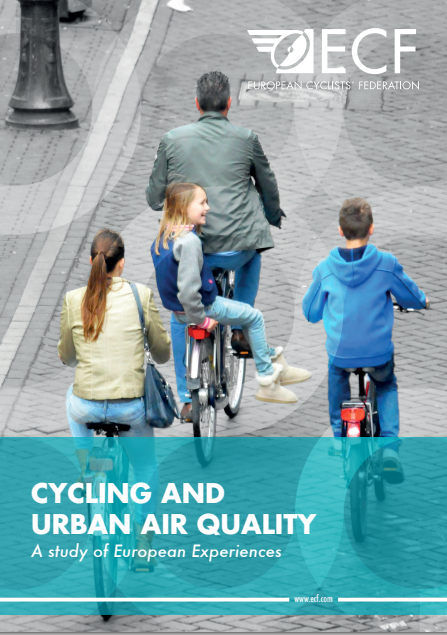
How much CO2 does Cycling really Save?
The “World You Like” campaign aims to promote existing climate solutions in Europe. Indeed, there are many of them. Saving the climate makes people creative. Yet, one such climate solution indeed already exists all over Europe – the bicycle. Cycling to work, spending your holidays cycling, or using your bike to transport stuff and groceries is something almost anybody, anywhere can do right now. But just how much CO2 can you save using your bike?
Knowing how much greenhouse gas you are releasing into the air using different modes of transport is possible. ECF has calculated and compared the carbon dioxide emissions of cycling, driving a car, or taking the bus.
The usual suspect(s)
Let’s start with the car, still most Europeans’ preferred mode of transport. As it turns out, unfortunately it is also the most environmentally unfriendly one. It starts with production. Producing cars is a high-energy industrial process that uses lots of raw material. On average, the production of a car alone accounts for 42 g of CO2 emissions per kilometer driven.
But actually driving your car is what really bumps up greenhouse gas emissions, of course. Considering the average road use of European car drivers, different fuel types and average occupation, and adding emissions from production, driving a car emits about 271 g CO2 per passenger-kilometer.
Taking the bus will already cut your emissions by more than half. Buses have longer life spans and can carry more people, which means that producing them accounts for less emissions per passenger and kilometer. A bus ride will only blow 101 g of CO2 per kilometer into the air, which is less than the majority of even the most modern cars available.
Yet these numbers are based on average occupation, and if twice as much people took public transport regularly, the emissions could be reduced even further.
The game changer
But what if you wanted to reduce your emissions to an absolute minimum? Enter the bicycle.
Some might think bicycles are not producing emissions at all. No fuel, no tank, and no exhaust. Yet bicycles need to be produced as well, and while they are not fuel-powered, they’re food-powered – and producing food unfortunately creates a certain amount of CO2 emissions.
The question is, just how much exactly? And how much is it compared to cars and buses?
And here comes the good news. The production of a bicycle sets you back only 5g per kilometer driven. That’s about one tenth compared to the production of a car. Add to that the CO2 emissions from the average European diet, which is another 16g per kilometer cycled. In total, riding your bike accounts for about 21g of CO2 emissions per kilometer – again, more than ten times less than a car!
And there is room for improvement as well. Europeans still eat quite a lot of meat, which needs up to 1500g of CO2 emissions per 100 calories produced. Climate-friendly, vegetarian and local food produces much less CO2 (11 g for corn, 23 g for potatoes, for example).
If more people changed their eating habits, the bicycles’ carbon record could be even better – not to mention the health benefits of both cycling and a healthy diet.
So if you are the owner of a bicycle, one personal climate solution is right there in front of your door or in your backyard. Why not start leaving the car at home this summer, and begin cycling into a world you like?
If you are interested in finding out more about how cycling can help to redcuce the transport sector's emissions, - download our reports 'Cycle more Often 2 cool down the planet!' and 'Cycling and Urban Air Quality' - and read about our work on decarbonisation.
Regions:
Topics:
- Log in to post comments
Contact the author
Recent news!
Upcoming events
Contact Us
Avenue des Arts, 7-8
Postal address: Rue de la Charité, 22
1210 Brussels, Belgium











